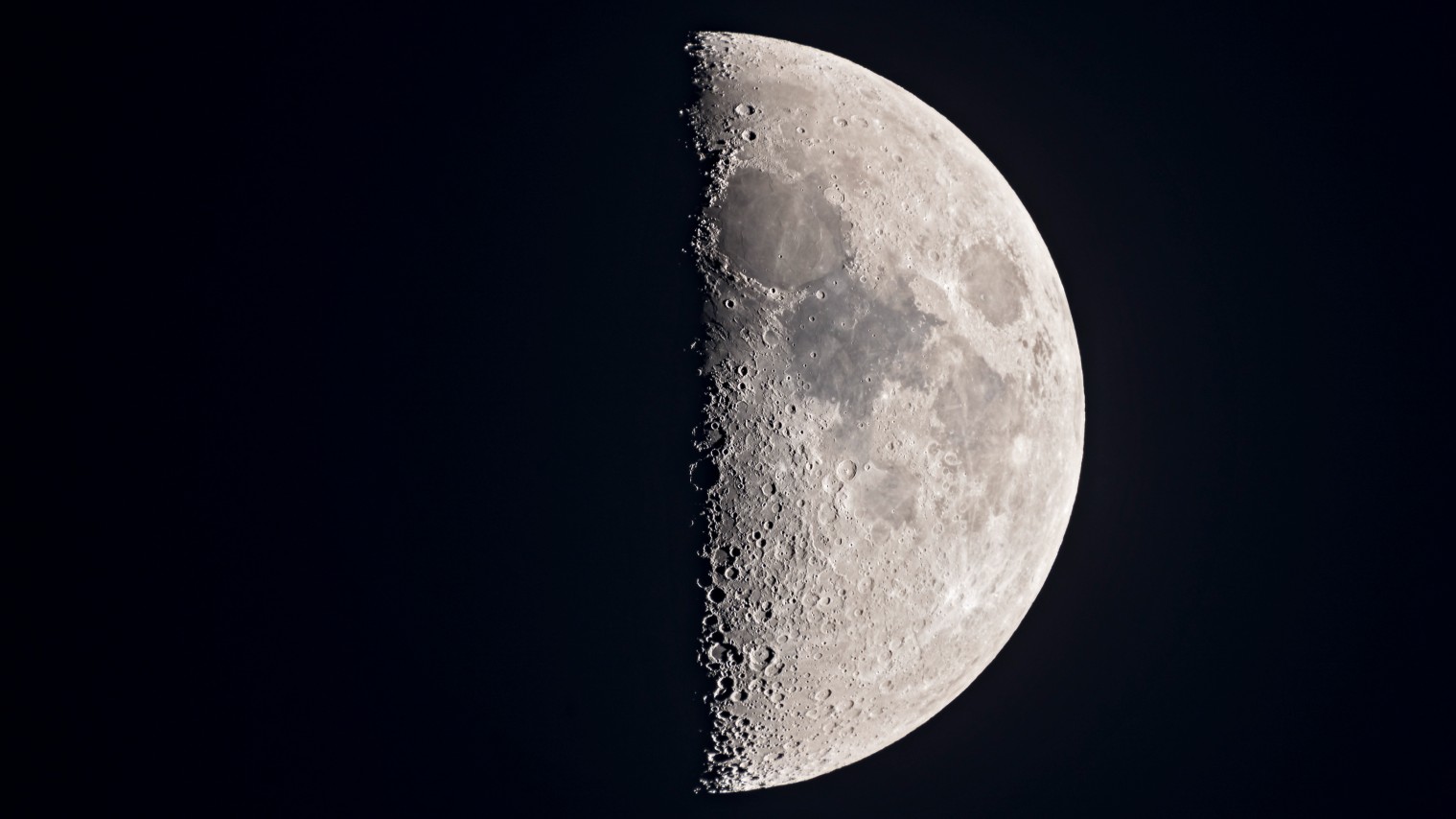Don't miss the half-lit first quarter moon rise tonight: Here's what to look for
The first quarter moon is the perfect opportunity to explore shadowed craters lining the terminator.

The half-lit disk of the first quarter moon will grace the night sky on Monday (June 2), presenting a wealth of lunar features to explore before Earth's natural satellite sets below the horizon in the early morning hours.
The moon hits its first quarter phase at 11:41 p.m. EDT on June 2 (0341 GMT on June 3) for viewers in New York, who will find its semi-shadowed disk high above the southwestern horizon immediately after sunset, according to stargazing website In-the-sky.org. At this time, the moon is positioned at a 90-degree angle away from the sun in the sky, having travelled a quarter of the way around our planet since its new moon phase on May 26.
Viewing the moon through a pair of 10x50 binoculars will reveal a myriad of craters and broken terrain features peppering the line separating the dayside and night side of the lunar surface, known as the terminator. The magnifying power of a 6-inch telescope (or greater) will grant an even closer view of the moon's more prominent features, such as the Albategnius walled plain, located close to the terminator just below the lunar equator.
Countless shadowed craters line the terminator all the way down to the moon's southern pole, while the 54-mile-wide (87 km) Aristotles Crater and smaller Eudoxus Crater form a tempting target on the border of Mare Frigoris to the north.
The dark expanses of Mare Serenitatis (Latin for Sea of Serenity) and Mare Tranquillitatis (Sea of Tranquility) can also be seen scarring the moon's surface, easily visible to the naked eye. The 'lunar seas' formed billions of years ago when masses of molten lava flooded impact basins excavated by devastating asteroid strikes.


Want to see the shadowed craters and lunar seas for yourself? The Celestron NexStar 4SE is ideal for beginners wanting quality, reliable and quick views of celestial objects. For a more in-depth look at our Celestron NexStar 4SE review.
Mare Tranquillitatis' southern shore was the site of the historic Apollo 11 moon landing, where astronauts Neil Armstrong and Edwin "Buzz" Aldrin took humanity's first steps on another world as pilot Michael Collins looked on from lunar orbit in July 1969.
Mars can be found to the moon's lower right after sunset on June 2, with the bright star Regulus of the constellation Leo positioned directly between the two solar system bodies. The following week will see the waxing gibbous moon grow ever larger ahead of its full 'Strawberry Moon' phase on June 11, named for the brief U.S. strawberry-picking season with which it happens to coincide.
Get the Space.com Newsletter
Breaking space news, the latest updates on rocket launches, skywatching events and more!
Editor's Note: If you would like to share your astrophotography with Space.com's readers, then please send your photo(s), comments, and your name and location to spacephotos@space.com.
Join our Space Forums to keep talking space on the latest missions, night sky and more! And if you have a news tip, correction or comment, let us know at: community@space.com.

Anthony Wood joined Space.com in April 2025 after contributing articles to outlets including IGN, New Atlas and Gizmodo. He has a passion for the night sky, science, Hideo Kojima, and human space exploration, and can’t wait for the day when astronauts once again set foot on the moon.
You must confirm your public display name before commenting
Please logout and then login again, you will then be prompted to enter your display name.
